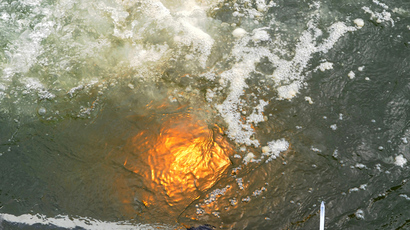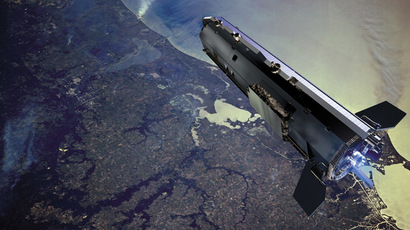Space fishing: Japan to test 'magnetic net' for space junk

Japan’s space agency is subcontracting a fishing net company to develop a technology to clean up the space junk that poses a direct threat to Earth’s communication networks. The mission is planned for 2019, with first tests scheduled for this February.
Tokyo’s Aerospace Exploration Agency (JAXA) and Nitto Seimo Co, a
company with almost a century-long experience in fishing net
manufacturing, have already developed a space net measuring 1
kilometer long and 30cm wide in a bid to clear Earth’s orbit from
some 100 million pieces of man-made junk.
Made of three strong and flexible lengths of metal fiber, the net
is scheduled to be first tested in orbit in February. During the
first phase a satellite will unreel a wire net of some 300 meters
long that will use a specially generated magnetic field to
reel-in the debris just above our atmosphere.
“We started work on this project about five years ago and we are
all excited to see the outcome of this first test,” Koji
Ozaki, the engineer who heads the development team at
Hiroshima-based Nitto Seimo, told the South China Morning Post.
The test is planned to last for about a year after which the net
be pulled down by Earth’s gravity, incinerating the junk once the
net enters the atmosphere.
The company hopes that their know-how will be able to complete
the first part of the clean-up mission. The aim is to tackle the
hazardous problem of debris damaging space satellites and
spacecraft.
“Fishing nets need to be extremely strong because they need
to be able to hold a large number of fish, but our tether does
not have to be that strong,” Ozaki said. “It is more
important that it is flexible.”

If the mission is successful, Jaxa is planning further trials
next year with a complete system deployment as early as 2019.
The majority of the 100 million pieces of human-made debris are
orbiting some 700 to 1,000 kilometers above the planet’s surface.
Most of them are comprised of small particles but around 22,000
measuring 10 cm or more are believed to be hazardous and pose a
direct threat to satellites and spacecraft.
The debris is made up of space exploration leftovers including
spanners, nuts, bolts, gloves and shards of space craft. Experts
believe that global positioning systems, international phone
connections, television signals and weather forecasts could be
affected by ever increasing levels of space junk.
In order to protect the International Space Station from the
fields of space debris, over 100 special anti-impact shields, the
Whipple Bumpers, have been installed to tackle threat from
objects whose velocities range between 3 and 18 kilometers per
second. In addition, the orbital paths of spacecraft going to and
returning from the ISS are constantly monitored for debris.














